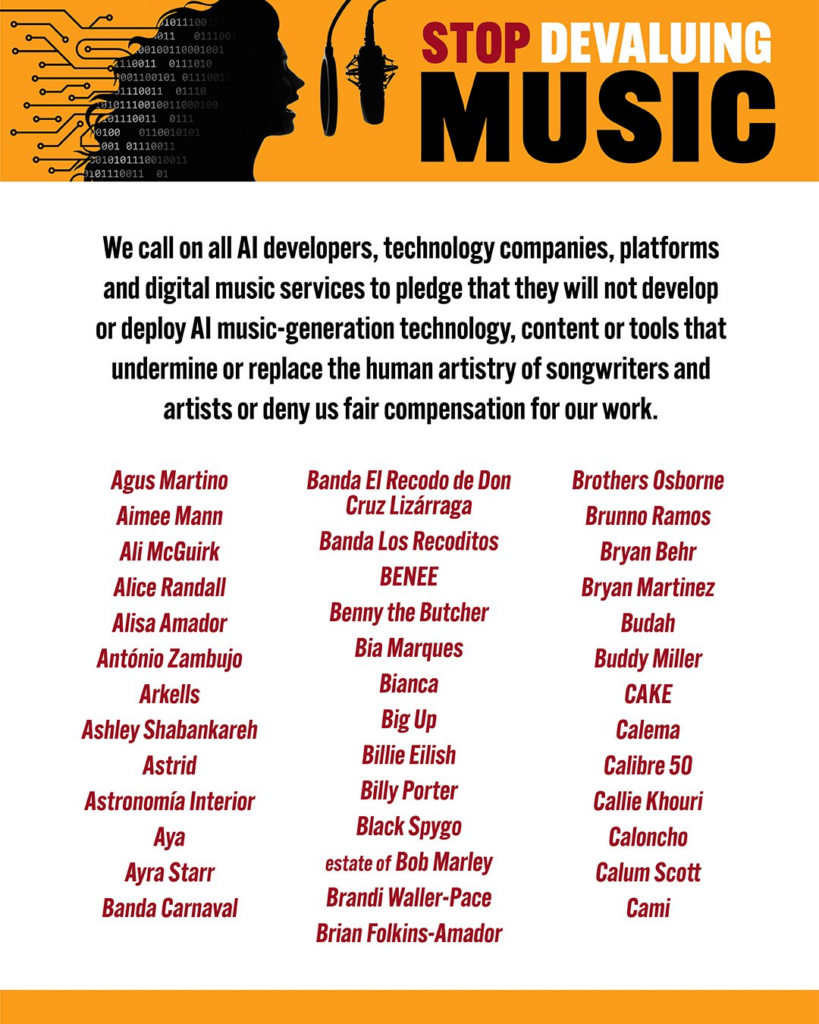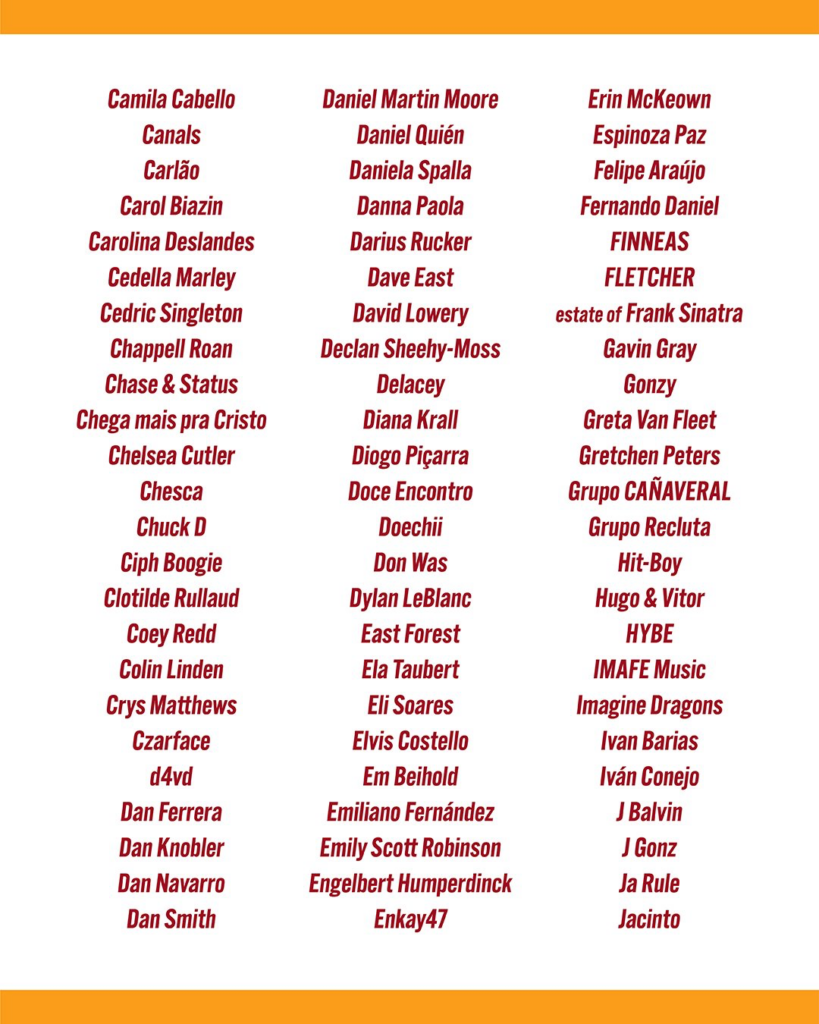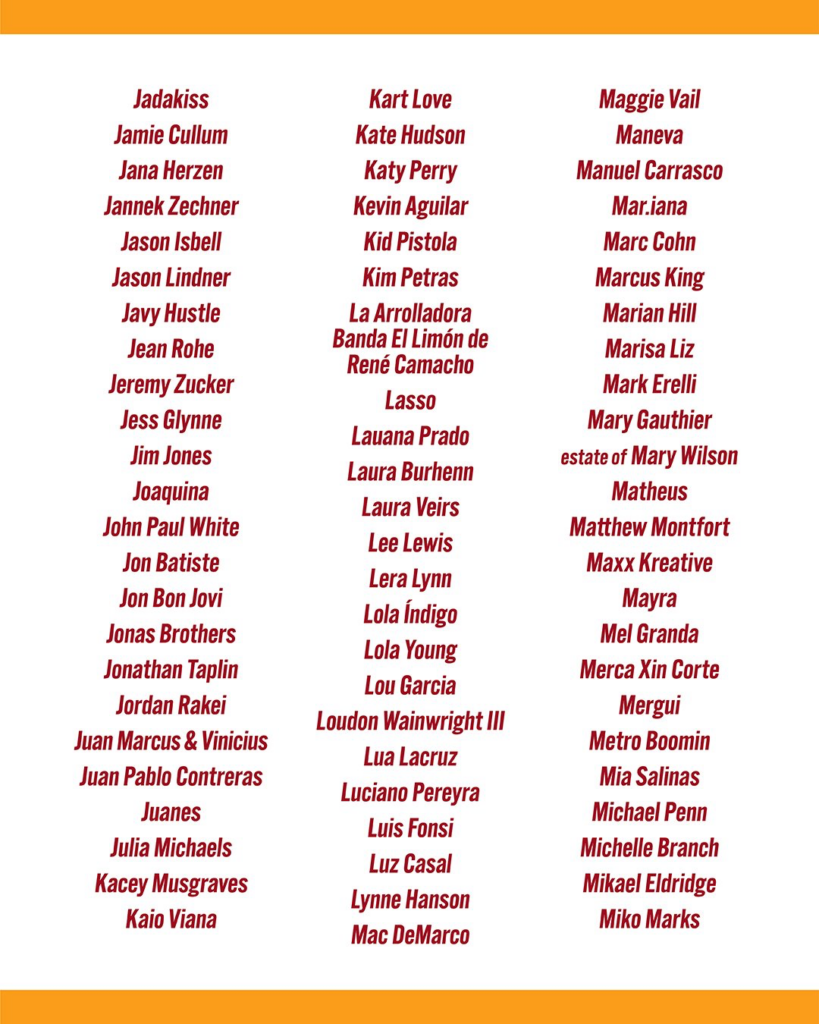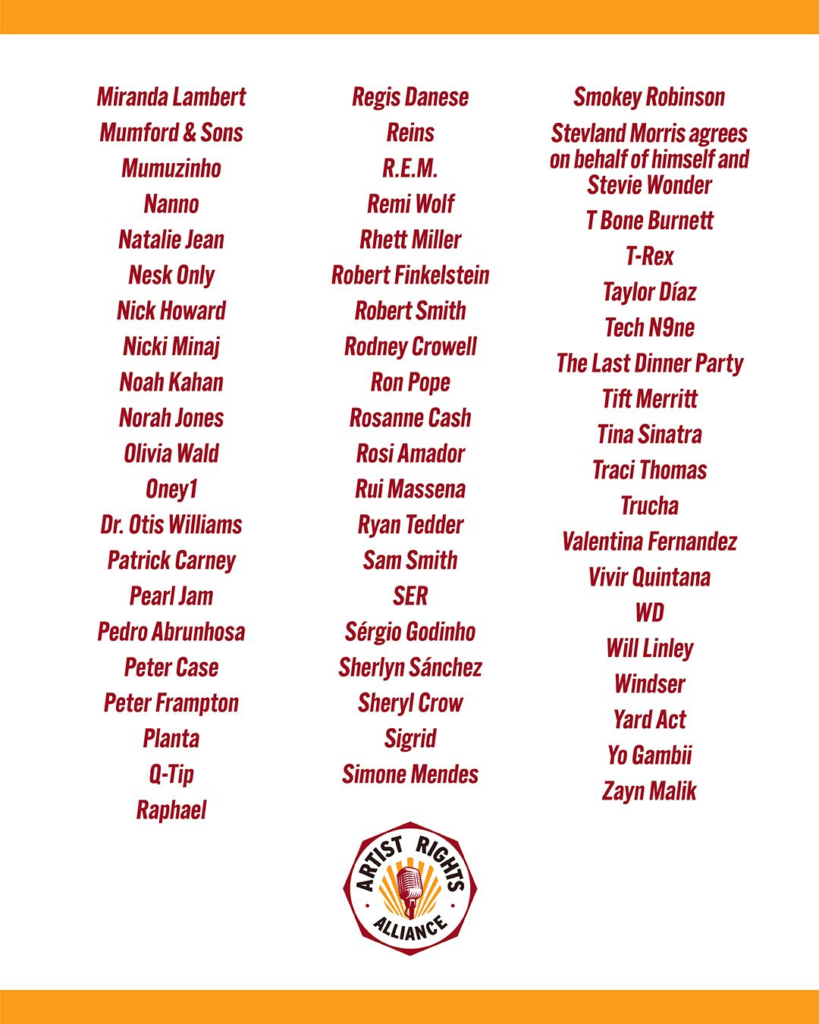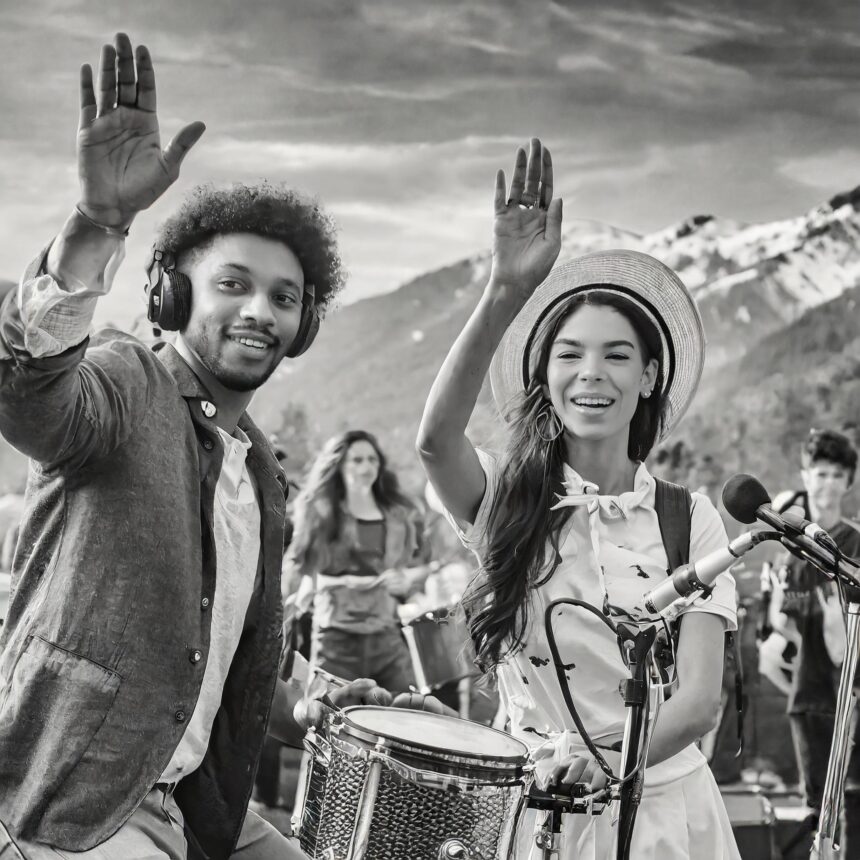Leading figures in the music industry — Billie Eilish, Pearl Jam, and Stevie Wonder — joined forces to address the burgeoning influence of artificial intelligence (AI) on creative arts. Through an open letter orchestrated by the Artist Rights Alliance (ARA), associated artists voiced their collective concerns regarding the intersection between technology and human creativity.
What’s Happening & Why This Matters
The ARA’s open letter, signed by over 200 musical talents, casts a spotlight on the existential threat AI poses to artists’ livelihoods and the value of “human art”. The appeal made directly to AI developers, technology companies, and digital music services, urges them to refrain from utilizing AI in ways that infringe upon or devalues human artists’ rights. This call-to-action emerges against the backdrop of increasing unease within the creative community regarding AI’s potential to replicate and replace human-generated content.
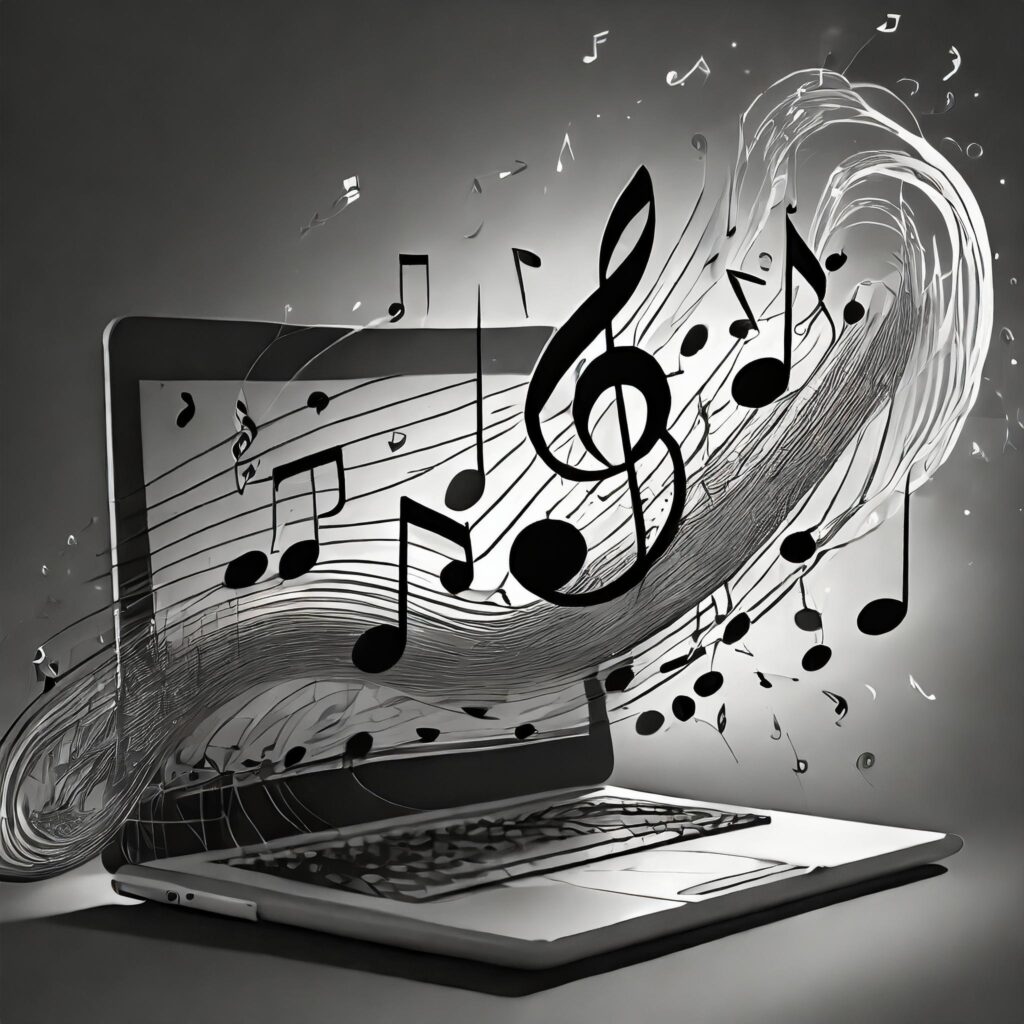
AI’s advancement into music generation, epitomized by projects like Google’s Lyria, has stoked fears among artists of a future where AI dilutes the music industry’s royalty pool. Fears include the endangerment of financial stability for working musicians, artists, and songwriters. The letter underscores a critical debate on the balance between AI’s potential to enhance human creativity and its capacity to undermine human artistry.
The Broader Implications
The petition from the ARA aligns with broader concerns across various creative domains that reflect a growing apprehension about AI’s future role amongst creatives. Historical parallels are being drawn with past technological innovations like synthesizers and digital sampling which, despite initial resistance, became integral to music production. There is a scenario that suggests a potential path where AI similarly integrates into creative processes without displacing human creativity.
However, the ARA’s letter emphasizes a crucial distinction between human-generated art and AI output. ARA calls for a halt to the development of AI technologies that could replace human artists or deny them fair compensation. This stance raises important questions about the future of creativity, the ethics of AI in the arts, and the sustainability of creative careers where digital support is increasing.
TF Summary: What’s Next
As the debate around AI and creativity intensifies, the response from technology companies and AI developers to the artists’ plea remains to be seen. The music industry, like other creative sectors, stands at a crossroads, facing the challenge of embracing AI’s potential while safeguarding the rights and livelihoods of human artists. The petition from leading artists serves as a rallying cry for a thoughtful, balanced approach to AI in the arts, advocating for innovation that enhances rather than diminishes human creativity. The path ahead will likely involve ongoing dialogue, negotiation, and perhaps new frameworks for ensuring that the future of art remains vibrant, diverse, and distinctly human.
See the full list of artists below:
